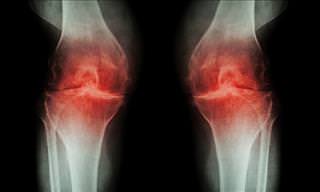An American doctor has decided to change his patients’ financial relationship with him, and the changes he’s making might turn out to be the future of medicine.
Dr. Bryan Hall, who spent his career working as a pediatrician at a hospital, decided that he wanted to be his own boss in March 2016. After taking some time off, he received a call from a woman that wanted him to do a house call in order to visit her sick son.
This led him to realize that he wanted to treat patients without having to deal with the insurance requirements. In the process of figuring out how to go about doing this, he discovered a whole new way to run a doctor’s office.
Direct primary care works by charging a monthly membership fee that covers most of what the average patient needs, such as visits and drugs at reasonable prices. It does away with the necessity of accepting insurance.

This method led Dr. Hall to open a primary care pediatrics practice, Gold Standard Pediatrics, in South Carolina. He is part of a rapidly-growing movement of pediatricians and family medicine physicians that are employing the primary care model.
This is happening in the context of the rise of high-deductible health plans. A survey conducted in September 2017 found that some 51% of workers had insurance plans requiring them to pay up to $1,000 upfront before their insurers were willing to pick up the rest of the cost.
As a result, direct primary care gives patients a much clearer picture of how much they’re spending on healthcare. On the other hand, primary care doctors that operate traditionally are more likely to see patients for less time while making the most money.
This notion highlights the benefit of direct primary care – the method allows a doctor to focus exclusively on a patient.

Direct primary care basically works by paying a monthly fee to be part of a practice. In other words, it’s just like paying a monthly cellphone bill, and does away with having to pay for copays or urgent-care visits. As part of that monthly fee, basic checkups are included, together with the ability to obtain medications and lab tests at or near wholesale prices.
In addition, direct primary care also allows families almost constant access to a doctor – even if they’re off on vacation, or if someone needs to take an emergency trip to the practice on a Saturday night after having a bad fall.
Another kind of subscription healthcare is concierge medicine, which is similar to primary care, but often costs much more and usually includes health insurance. At the moment, primary care practices tend to have a variety of members that still have insurance.
Direct primary care has been around since the end of the 1990s, after three doctors decided to go insurance-free, charging monthly fees and allowing themselves more time to enjoy practicing medicine. This allowed patients to know exactly how much their doctor was going to cost.

The main problem with direct primary care is the so-called “too-good-to-be-true” factor. Many patients believe that it is a scam of some sort due to the relatively low cost when compared to conventional methods of gaining access to doctors or medical practices.
On the doctors’ side, the main difficulty that they face is that they have to say goodbye to the comfort and security of a regular salary. This is because direct primary care practices solely rely on membership fees. The more people that sign on to the practice, the more money the practice makes.
The upshot of this for the doctors running a direct primary practice is that they are able to have more free time and can practice medicine properly. Many say that although they might make less money than if they were on a salary, they find the pay cut worth it.
Despite the obvious benefits of direct primary care, there are certain things that are currently holding it back. The first is that some people can be led to believe that it is a replacement for health insurance, when in fact it is not. Patients who may have a health issue outside what constitutes direct primary care will not be protected financially, so it’s advisable to still keep some form of health insurance policy.

Furthermore, primary care doctors around the world, especially in the US, tend to be in short supply. This is because many of them go into specialty medicine. Last but not least, many direct primary care doctors end up isolated from other doctors in the medical community. They only have to answer to their patients and no-one else. This fact in itself means that it’s difficult to obtain hard data on how direct primary care practices work in comparison with traditional practices.
Many medical professionals do see direct primary care having a place in healthcare systems around the world, however, they also have their reservations, due to the model's pitfalls and the logistical challenges it involves.
Nevertheless, politicians, especially libertarians, have voiced their support for the direct primary care model, touting it as a free-market solution to healthcare. It remains to be seen where the movement is going to go, but if it continues to gain traction, it looks like a new healthcare revolution could be on the cards.
Images by Deposit Photos.
 Go to BabaMail
Go to BabaMail




























